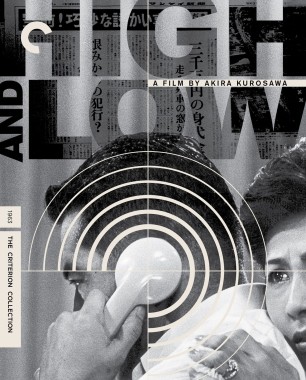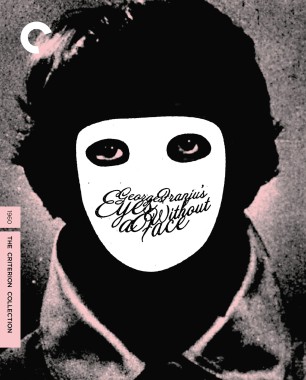
Guillermo del Toro’s Top10
In compiling his top ten Criterions, Cronos director Guillermo del Toro had a hell of a time limiting himself. Del Toro humorously bemoaned the “unfair, arbitrary, and sadistic top ten practice,” so instead he decided on ties or rather, “thematic/authorial pairings.”
-
1 (tie)
-
Akira Kurosawa
Ran
Kurosawa’s being one of the essential masters is best represented by these, his most operatic, pessimistic, and visually spectacular films. Try and guess which is which. How he managed to be both exuberant and elegant at the same time will be one of life’s great mysteries.
-
2 (tie)
-
Ingmar Bergman
Fanny and Alexander: Theatrical Version
Bergman as a fabulist—my favorite—is absolutely mesmerizing. These two films have the primal pulse of a children’s fable told by an impossibly old and wise narrator. Fanny and Alexander is Dickens, Hans Christian Andersen, and John Calvin rolled into one. Both tales are ripe with fantastical imagery and a sharp sense of the uncanny. Also, I am often surprised at how the humor and comedic elements in The Seventh Seal seem to be overlooked in favor of its reputation as a quintessential “serious” art film.
-
Georges Franju
Eyes Without a Face
Beauty and the Beast may be tenuous and delicate where Eyes Without a Face is overripe and pulpish, but these films are gorgeous, dark poems about fragility and horror. Both fables depend on sublime, almost ethereal, imagery to convey a sense of doom and loss: mad, fragile love clinging for dear life in a maelstrom of darkness. The clash of haunting and enchanting imagery has seldom been more powerful. Eyes Without a Face boasts an extraordinary soundtrack too!
-
4 (tie)
-
David Lean
Oliver Twist
Most people remember David Lean for his big-scale epics, like Doctor Zhivago, Lawrence of Arabia, or The Bridge on the River Kwai. But here he is at his most precise and poetic. Both movies are epics of the spirit, and both are plagued by grand, utterly magical moments and settings; whether showing Oliver’s mother straining and in pain, by intercutting with a flexing branch of thorns, or by lovingly lingering on Miss Havisham’s decaying splendor, Lean understand the need for hyperbole in order to manage the larger-than-life Dickensian archetypes. Some of the passages in both films skate the fine line between poetry and horror.
-
5 (tie)
-
Terry Gilliam
Brazil
Terry Gilliam is a living treasure, and we are squandering him foolishly with every film of his that remains unmade. Proof that our world is the poorer for this can be found in two of his masterpieces. Gilliam is a fabulist pregnant with images—exploding with them, actually—and fierce, untamed imagination. He understands that “bad taste” is the ultimate declaration of independence from the discreet charm of the bourgeoisie. He jumps with no safety net and drags us with him into a world made coherent only by his undying faith in the tale he is telling. Brazil remains one of the most important films of my life, and Time Bandits is a Roald Dahl–ian landmark to all fantasy films. Seeing Time Bandits with my youngest daughter just two weeks ago, I was delighted when she laughed and rejoiced at the moment when Kevin’s parents explode into a cloud of smoke.
-
6 (tie)
-
Kaneto Shindo
Kuroneko
Horrors and desire, death and lust go hand in hand in Onibaba and Kuroneko, a perverse, sweaty double bill from Kaneto Shindo. I saw these two films at age ten, and they did some serious damage to my psyche. Both are perfect fables rooted in Japanese folklore but distinctly modern in their approach to violence and sexuality. As exuberant and exquisite as a netsuke carving, these atmospheric jewels show mankind trapped in a cosmically evil world. The tales seem to fit together so perfectly that they fuse into one as time goes by. Onibaba and Kuroneko make a perfect double bill for the second circle of hell.
-
7 (tie)
-
Stanley Kubrick
Paths of Glory
Kubrick was a fearsome intellect. His approach to filmmaking and storytelling remains as mysterious at it is compelling. The illusion of control over the medium is total. Both films speak eloquently about the scale of a man against the tide of history, and both raise the bar for every “historical” film to follow. Paths of Glory is a searing indictment of the war machine, as pertinent now as it was in its day. I suspect, however, that Kubrick was also a highly instinctive director, and that he grasped incessantly for his films. An anecdote tells us of him begging Kirk Douglas to stay in bed a few more days after an accident, because Kubrick was using the “downtime” to understand the film they were making.
-
Preston Sturges
Unfaithfully Yours
The candle that burns twice as bright burns half as long, as the saying goes—and Sturges’s films and meteoric, puzzling career confirm this. These are masterful films full of mad energy and fireworks, but Sullivan’s Travels also manages to encapsulate one of the most intimate reflections about the role of the filmmaker as entertainer. Many have attempted to mine the same field as Sturges, and all have failed. A rara avis in the landscape of film.
-
9 (tie)
-
Benjamin Christensen
Häxan
Sheer terror and sheer poetry, but both stem from distinctive medieval traditions. Häxan is the filmic equivalent of a hellish engraving by Bruegel or a painting by Bosch. It’s a strangely titillating record of sin and perversity that is as full of dread as it is of desire and atheistic conviction, and a condemnation of superstition that is morbidly in love with its subject. Vampyr is, strictly speaking, a memento mori, a stern reminder of death as the threshold of spiritual liberation. Like any memento mori, the film enthrones the right morbid imagery (skull, scythe, white limbo) in order to maximize the impact of the beautiful, almost intangible images that conclude it. If only Criterion had acquired my commentary track—sigh—from the UK edition.
-
Charles Laughton
The Night of the Hunter
The two supreme works of childhood/horror. Lamentations of worlds lost and the innocents trapped in them. Sublime fairy tales of despair that depict the adult world as a toxic environment for kids to exist in. Secret treasures kept in the hearts of children must be safeguarded from the corruption of an adult world full of certainty and arrogance. Both films are so beautiful and so dark—they truly make me weep in awe.

























